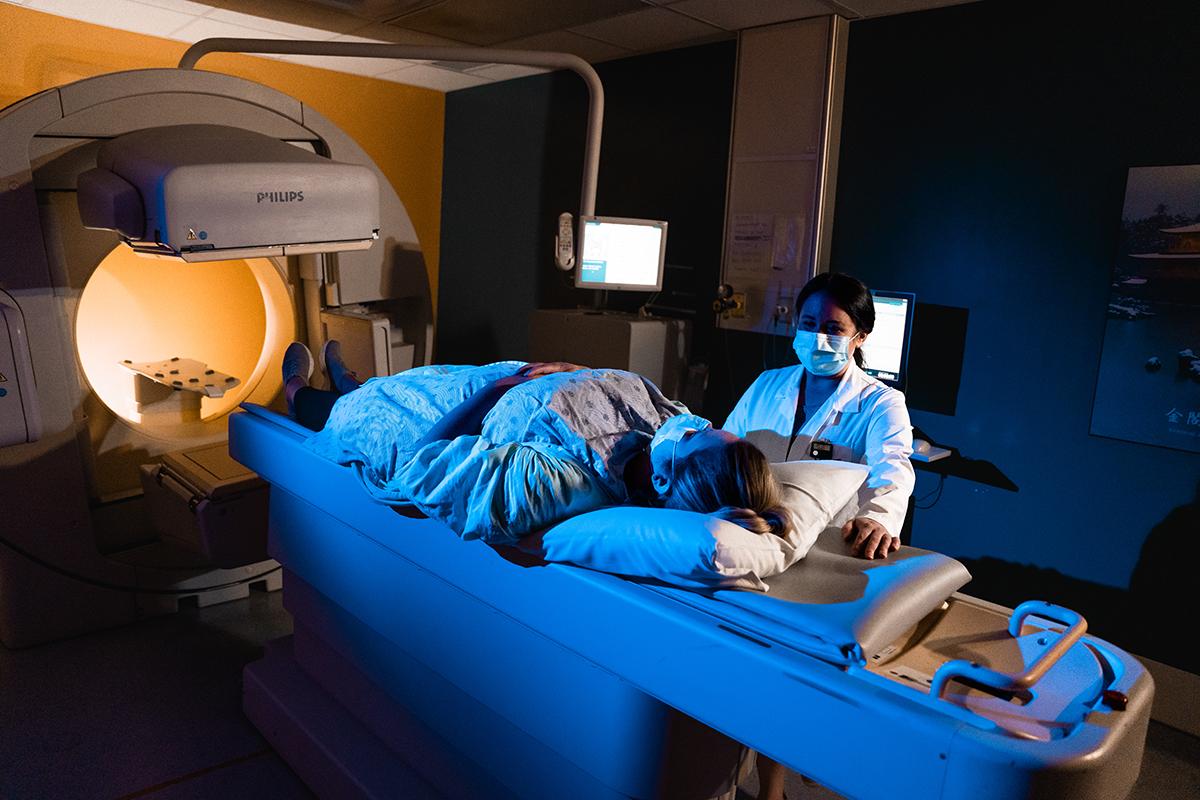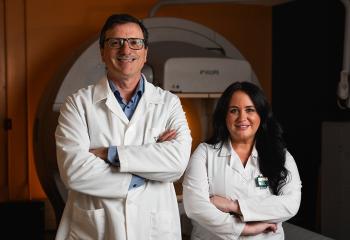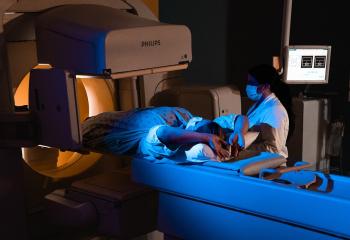
Originally published by The Chronicle Herald.
As part of Giving Tuesday, the QEII Foundation is on a mission to acquire two new nuclear medicine scanners to improve patient care with every gift being matched by QEII physicians.
The QEII Foundation is continuously embracing its commitment to advancing patient care by providing the QEII Health Sciences Centre with new, innovative technology. Advancements that are made possible through donor support.
Now the QEII Foundation is on a mission to raise $3 million to bring two state-of-the-art nuclear medicine scanners to the QEII – new technology that will enhance patients’ health-care experiences. These scanners, known as the StarGuide Hybrid SPECT/CT, represent an innovative leap that could position the QEII as the first health centre in the country to have the advanced nuclear medicine scanners.
Dr. Steven Burrell, the head of nuclear medicine at the QEII, emphasizes the need for updated nuclear medicine scanners at the QEII.
“We train the next generation of nuclear medicine physicians. It’s really important that we have the best state-of-the-art equipment,” says Dr. Burrell.
“We see the impact of new technology and we know how much it can improve patient care.”
Given nuclear medicine’s pivotal role in diagnostic imaging through the administration of a radioactive tracer to identify cancer, cardiac disease, brain disorders and other medical conditions, the acquirement of two new scanners is critical for providing patients with the best care.
From reduced wait times to higher quality imaging and providing a more accurate diagnosis, these new scanners will directly impact patients during their health-care journey.
“The scans are just more accurate,” says Dr. Burrell. “They find disease processes with greater sensitivity, when it’s smaller and find it when it’s earlier with greater confidence than the scanners we currently have.”
These new scanners are also transformative in assessing how diseases, like cancer or heart disease, are changing and allow physicians to tailor treatments more effectively. The two most common diseases imaged in nuclear medicine are cancer and heart disease, which are also the two leading causes of death in Atlantic Canada. Having access to leading-edge technology will be an incredible benefit to patients living with these life-altering diseases.
By reducing the scan time, Dr. Burrell says patients who experience claustrophobia or are unwell due to intensive treatments will benefit greatly. He’s also hopeful this new technology will bolster recruitment and retention efforts at the QEII.
“It’s important we have the best equipment (to help with) retention of nuclear medicine physicians and technologists,” he says. “People that we train are more inclined to stay and want to work here if the QEII gets state-of-the-art equipment.”
Overall, Dr. Burrell strongly advocates for the positive impact these scanners will have on patients and the important role the technology will play in supporting specialized therapies that are done at the QEII.
“Having state-of-the-art equipment is ensuring you’re doing the best that can be done for the patients,” he says.
Giving Tuesday
This Giving Tuesday, Nov. 28, the QEII Foundation announced that 40 QEII radiology and nuclear medicine physicians will match every gift to support the nuclear medicine project, up to $100,000 until December 31. This project is part of the QEII’s $100-million We Are campaign, dedicated to transforming health care for patients and their families.
The group of physicians directly supporting the patients who will benefit from this new, innovative technology have a history of donating to initiatives that impact the patients they work with. Collectively in recent years, they have donated $500,000, creating $1 million in impact by matching gifts, to support the acquisition of new diagnostic imaging technologies including the Gallium-68, which QEII Foundation donors helped fund.
Dr. James Clarke, the chief of diagnostic imaging and one of the physicians personally supporting the project, is ecstatic the QEII is getting two nuclear medicine scanners.
“I think it’s fantastic,” he says. “It will help us advance particularly in cancer care and diagnosis and also cardiac care throughout the region.”
Dr. Clarke says the physicians supporting this project are passionate about what they do and care about their patients immensely.
“We (the physicians) recognize how important it is for advancing patient care, to the point where we are more than happy to contribute to that advancement – we’re part of the community as well,” he says.
To learn more about the QEII Foundation or to make a donation in support of Nuclear Medicine at the QEII, visit QE2Foundation.ca/NucMed

